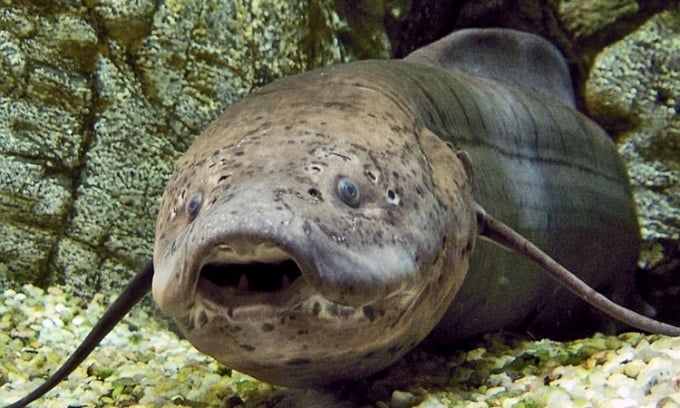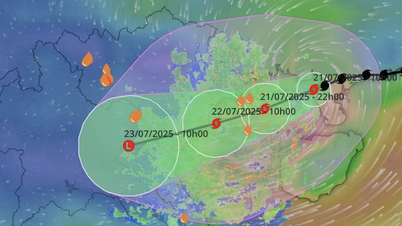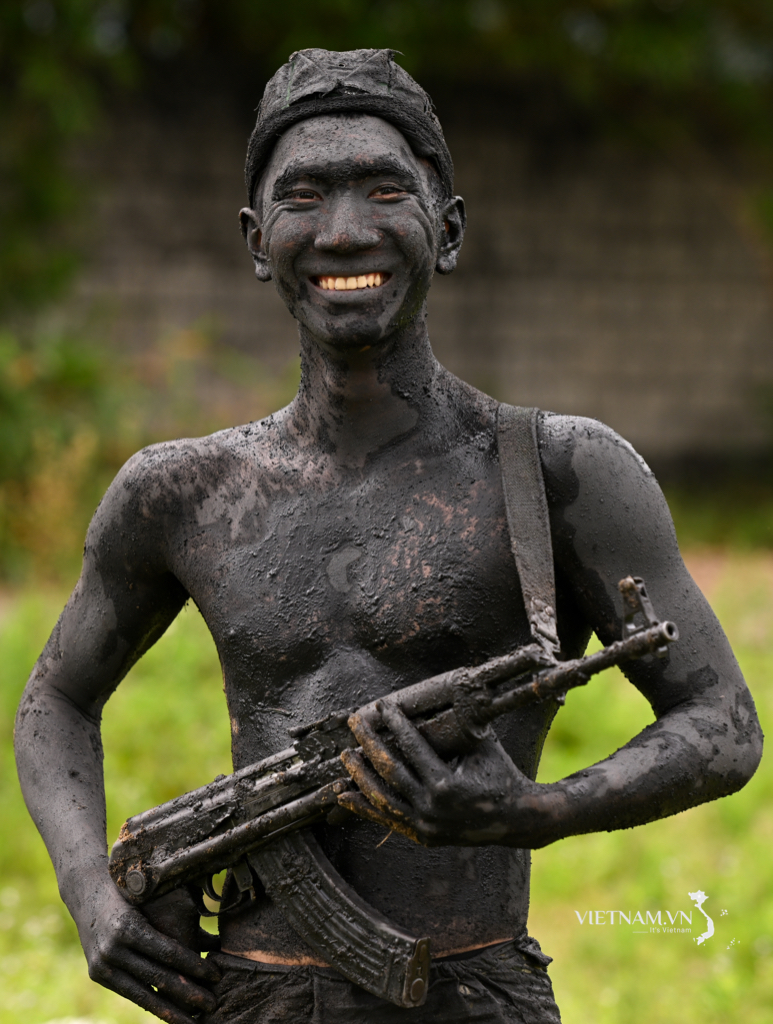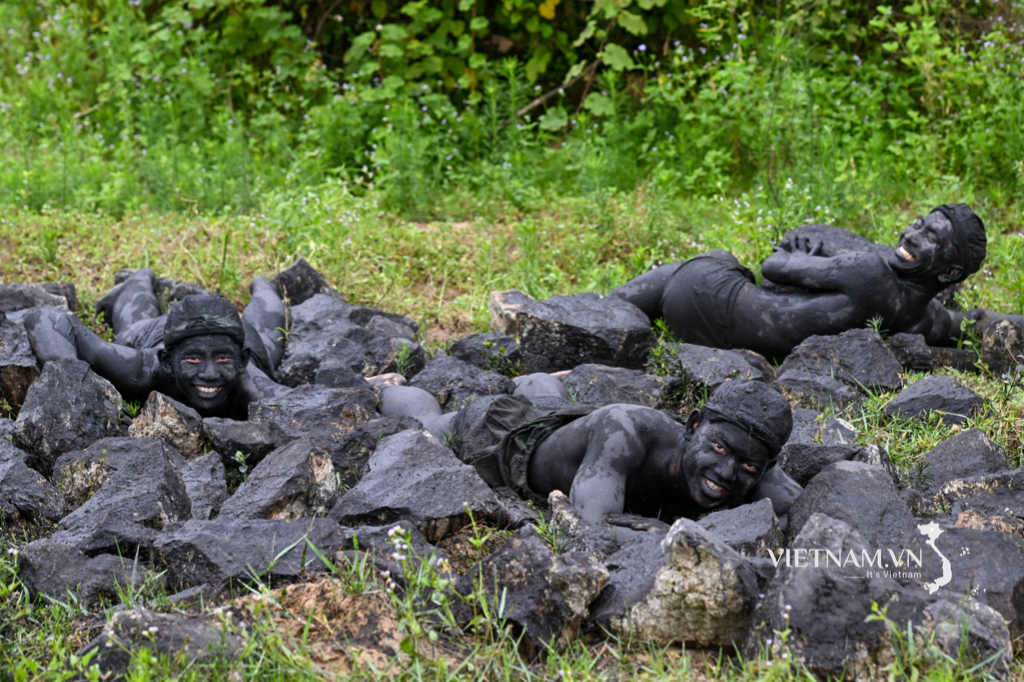Lungfish have existed on Earth for 390 million years and evolved a special hibernation mechanism to survive periods of prolonged heat and drought.

Lungfish can go four years without eating or drinking and still survive. Photo: Futurism
Ripples on the surface of the Bandama River in Ivory Coast radiate from a spotted creature that rises to breathe instead of catch insects. It is a West African lungfish, but there are three other lungfish species distributed in Africa, according to The Oxford Scientist .
A meter long, eel-like in appearance with mottled skin contrasting with olive-brown scales, lungfish live on the border between life in the water and on land. Possessing a pair of lungs, they must surface frequently to get oxygen, as their gills do not provide enough oxygen. Unlike most fish, lungfish can endure when rivers dry up during the dry season.
While other fish may retreat into cramped ponds or migrate, African lungfish burrow into dry riverbeds. There, they encase their bodies in slimy cocoons, leaving only an opening for their mouths, allowing them to breathe air and survive without food or water for months, even up to four years. This is called hibernation, when animals enter a state of physical and metabolic inactivity to survive the hot, dry conditions.
Hibernation is a common practice in tropical animals. Victorian naturalists managed to ship African lungfish halfway around the world to England and America to observe their physiology. Since then, technological advances have helped reveal the cellular and genetic processes behind lungfish hibernation. Lacking legs to move on land and able to be cut off from other environments when water dries up, African lungfish have evolved to remain dormant in the mud until water returns.
Induction, the first stage of hibernation, sets the stage for spending the next several months underground. In 1986, researchers showed that a series of cues that trigger hibernation include dehydration, hunger, increased air breathing, and stress. In addition, changes in the salinity and composition of dissolved compounds (such as calcium and magnesium) in the surrounding water signal that the river is drying up. It is possible that the gills play a role in sensing the amount of water in the fish's body.
With signs of a warming and drying environment around them, lungfish burrow into the mud, using their mouths and muscular bodies. They then retreat into their burrows, curling up their long bodies and covering themselves in a thick layer of secreted mucus. Once hardened, the mucus forms a waterproof cocoon, with only a narrow opening to the surface allowing the fish to breathe air through their lungs.
Genetic analysis revealed increased levels of hormone signaling in the brain due to increased gene activity. Metabolic shutdown occurs during maintenance, starting as soon as the mucus cocoon dries out. Oxygen uptake occurs exclusively through the lungs, and oxygen consumption is reduced by half compared to lungfish active in water. These changes are accompanied by a sharp decrease in metabolic activity, a heart rate that drops to 2 beats per minute (compared to the normal 25 beats per minute) and a cessation of ammonia production. Many body systems change, including the intestines, kidneys, and heart, reflecting reduced function during hibernation. Internal stores are the lungfish’s only source of energy.
The large number of granulocytes (white blood cells important in the immune system) that accumulate in the intestines, kidneys, and gonads of lungfish during the wet season also plays a role in the summertime retreat. A 2021 study in Science found that the mucus sacs are filled with granulocytes. They block pathogens from reaching the hibernating lungfish. Granulocytes migrate from their storage sites in the viscera, through the bloodstream, to the skin, entering an inflammatory state before completing their journey in the sac. There, the granulocytes create extracellular traps that block bacteria from reaching the hibernating lungfish, rendering the sacs immune.
Eventually, the water returns, and the lungfish is pulled out of its hibernation when its mouth, the only part of its body not covered by the mucus cocoon, fills with water. This begins the awakening phase of hibernation, which is also the most mysterious of the three. Struggling out of the cocoon and sluggishly rising to the surface, the lungfish excretes the waste that has accumulated during its hibernation. After about 10 days, which is when its internal organs reboot, the lungfish begins to feed again.
The African lungfish has remained largely unchanged for 390 million years, with fossils of burrowing lungfish dating back to the Devonian period. However, they are facing devastation from human activity. For example, the marbled lungfish has declined by 11% in the Lake Victoria basin in just five years, as overfishing and agriculture have led to wetland degradation and loss.
An Khang (According to The Oxford Scientist )
Source link





























![[Photo] National Assembly Chairman Tran Thanh Man visits Vietnamese Heroic Mother Ta Thi Tran](https://vphoto.vietnam.vn/thumb/1200x675/vietnam/resource/IMAGE/2025/7/20/765c0bd057dd44ad83ab89fe0255b783)









































































Comment (0)